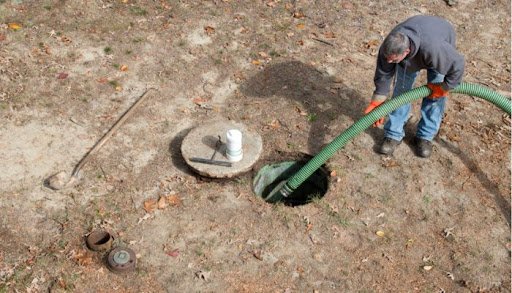Stillwell Septic And Grading Things To Know Before You Buy
Stillwell Septic And Grading Things To Know Before You Buy
Blog Article
Little Known Questions About Stillwell Septic And Grading.
Table of ContentsThe Facts About Stillwell Septic And Grading UncoveredStillwell Septic And Grading Can Be Fun For EveryoneRumored Buzz on Stillwell Septic And GradingThe Facts About Stillwell Septic And Grading UncoveredStillwell Septic And Grading for DummiesSome Known Details About Stillwell Septic And Grading Stillwell Septic And Grading Can Be Fun For Everyone
In general, septic system installment is a complicated process that needs careful planning and implementation. House owners must deal with a respectable installment group and be aware of regional guidelines and needs to make sure that their septic system works correctly for several years to find. After the septic system has actually been mounted and attached to the drainpipe area, it is time to backfill the location.The backfill material must be totally free of clods, huge rocks, icy matter, and particles that can result in spaces in the backfill that might allow settling with time. Squashed rock or pea crushed rock 1/2-inch in diameter is chosen if indigenous materials are not appropriate. As soon as the backfilling is complete, it is time to landscape the area.
As soon as the septic tank has actually been installed, it is critical to evaluate it to make certain that it is functioning appropriately (Setpic System Repairs). https://stillwell-septic-and-grading-45539548.hubspotpagebuilder.com/stillwell-septic-and-grading/revolutionizing-waste-removal-stillwell-septic-and-grading. Examining the system includes looking for leakages, making sure that the container is at the proper level, and analyzing the drainpipe area. Among one of the most common examinations carried out is the hydraulic load test
Fascination About Stillwell Septic And Grading
The water is then kept track of to guarantee that it streams appropriately through the pipes and right into the drainpipe area. If the water does not stream properly or backs up into the tank, it may show a problem with the system. One more test that is commonly carried out is the dye examination.
The dye is after that monitored to guarantee that it flows appropriately through the pipelines and into the drainpipe area. If the dye does not stream properly or shows up in the wrong location, it might show a trouble with the system. It is important to have an expert do these tests to ensure that they are done appropriately.

What Does Stillwell Septic And Grading Do?
Below are some crucial suggestions for property owners to preserve their septic system: The average family septic tank need to be inspected a minimum of every three years by a septic solution specialist. The regularity of pumping depends on the size of the tank and the number of individuals utilizing it. http://peterjackson.mee.nu/do_you_ever_have_a_dream#c1997. A general guideline is to pump the container every three to five years
Utilizing water-efficient fixtures and home appliances, such as low-flow showerheads and toilets, can reduce water usage and assist the septic tank work a lot more effectively. Just flush bathroom tissue and human waste down the bathroom. Avoid flushing anything else, including womanly health items, baby wipes, and food preparation oil, as they can obstruct helpful hints the system.
The Ultimate Guide To Stillwell Septic And Grading
Sewage-disposal tank installment is a complicated process that needs cautious preparation and implementation. Home owners have to recognize the essential steps entailed in the installation procedure to ensure that their septic tank functions properly and effectively. The initial action is to evaluate the website where the septic system will certainly be set up.
Once the site has been reviewed, the next action is to prepare for the installation. Homeowners should make certain that their professional is experienced in septic tank installment and will certainly function along with them throughout the procedure.
Rumored Buzz on Stillwell Septic And Grading

Home owners have to be mindful of the necessary steps associated with the installation process to ensure that their septic system operates appropriately and efficiently. By following these actions and preserving their system, house owners can rest ensured that their septic system will certainly supply reputable wastewater treatment for several years to come.
Virtually one in five United state homes have septic systems. If you're not properly keeping your septic system, you're not just hurting the environment, you're putting your household's health and wellness at riskand may be flushing thousands of dollars down the drain!
Some Known Questions About Stillwell Septic And Grading.

All that additional water can truly strain your septic system. This can be useful specifically if your system has not been pumped in a long time.
The Best Guide To Stillwell Septic And Grading
Know your system's place. When you have the tank pumped, draw a diagram or map showing its area in connection to fixed points - corners of the home, steps, or fencing messages.
Decrease the quantity of wastewater that must be dealt with and disposed of by your system: Laundry no even more than one or 2 tons of garments daily. Up to 53 gallons of water flood your septic system with each lots, so it's best to spread out washing out over the week.
Report this page